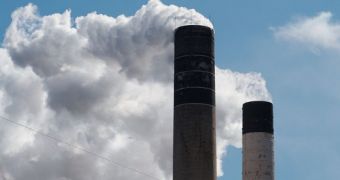A global concern regarding the effects of climate change, accelerated by man-made pollution have determined scientists to come up with several solutions seeking to curb the ever-growing amount of CO2 emissions.
Molten salt, edible sponges, or the miraculous 'pollution glue' spread on the streets of London are all products designed following the same idea, Gizmag informs.
However, a group of scientists have recently announced a new efficient method of capturing harmful CO2 emissions right from the source.
Alain Goeppert, G. K. Surya Prakash, chemistry Nobel Laureate George A. Olah and their partners rely on a truly affordable polymer, polyethylenimine. Apparently, the newly-discovered material is expected to collect a massive amount of CO2 directly from various emitting sources, or from the atmosphere.
So far, they have recorded good results, encouraging them to expand their research. According to their statement, the cheap polymer involved in the process of purifying air has displayed "some of the highest carbon dioxide removal rates ever reported for humid air."
Apart from its crucial role in reducing the amount of greenhouse gas emissions and restoring air quality all across the Globe, the system could also be exploited to purify gas streams from CO2 in submarines.
“They can operate under both dry and humid conditions. The fact that they can be used under humid conditions is an advantage compared to zeolites, which lose most of their CO2 adsorption capacity in the presence of water," reveal the scientists hoping to improve and implement this technique, in an article published by ACS publications.
Polyethylenimine can release the amount of CO2 emissions captured from the atmosphere or local sources so it could be used further or stored for later usage.

 14 DAY TRIAL //
14 DAY TRIAL //